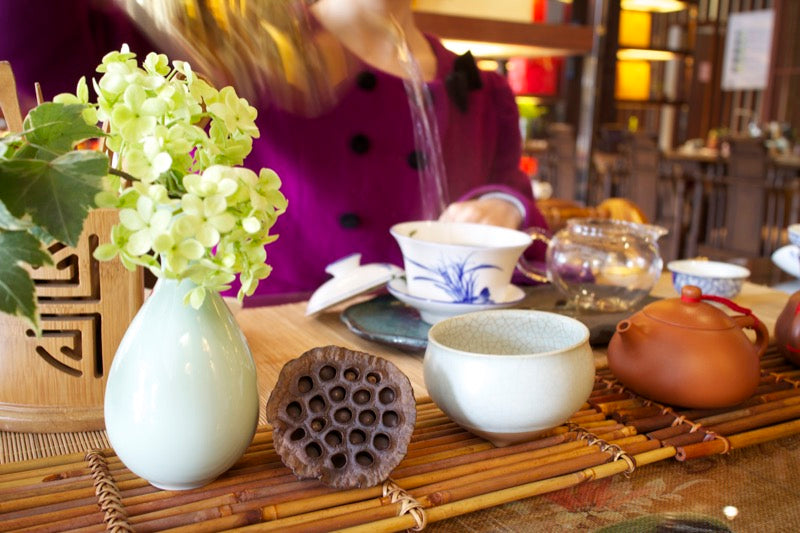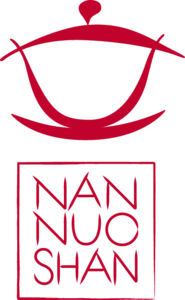Anhui, its capital and its teas
Hefei
April 1, 2015
Yesterday I took a high speed train to Hefei, the capital of the Anhui province, located about 500 km west of Shanghai.
A calm and laid-back city until just few years ago, Hefei transformed rashly into a cosmopolitan metropolis. The population increased by five times, the city boarders invaded the countryside with anonymous residential skyscrapers. Traffic jam is oppressive; pollution suffocating. Fifteen years ago there were barely cars in town. Despite closer to the western world, I feel more lost here than in the countryside.
Kids have not many opportunities to practice sport in the city. So the first half hour at school is dedicated to “sport,” as I note in the early morning, looking out of the window.
Shower, fast food breakfast in Chinese style, and I am ready to start the day.






I don’t plan to buy tea in town. It is just a convenient stop on the way to Lu’an and Huoshan. In the capital, is also possible to find all kind of tea produced in the province, a green tea kingdom. I spend the morning in a central tea market to get a first glance into the current tea production. Beside the countrywide famous green teas like Huangshan Maofeng, Taiping Houkui and Lu’an Gua Pian, there are also less famous varieties worth attention. To mention a few: Yuexi Cui Lan, a two-leaf and one-bud tea, and the more expensive Wu Li Qing, a bud-only green tea. Huoshan Huang Ya, a yellow tea, is also produced in Anhui. Unfortunately this tea is nowadays produced very green. The last step of yellow tea production is kept very short -few hours instead of days- or skipped altogether.




After a delicious homemade lunch in Shanghai-an style my stomach is ready for more tea. I visit two teashops. In the first I taste several green tea of superior quality and superior price. Huangshan Ya is particularly sweet and refreshing. It is produced from the same tea bushes as Huangshan Maofeng, but with more buds. Now, early in the season, the prices are still very high because of the high demand for the first green tea of the year. I ask the owner of the shop to send me some samples to Shanghai in ten days, when the prices will be lower while the quality still high.




From the first glance into the second shop I realize that I will spend here a few hours. I leave my backpack aside and browse around. They are specialized in Pu’er and fine tea pottery from Jingdezhen. The owner treats me with an aged Sheng Cha (raw pu’er) from Mengkuzhen. He sells the 350g cake for 3500 yuan, corresponding to 475 euro! The cakes were stored three years in Yunnan and six in Anhui, where the climate is hot and humid. Aging is faster under these conditions, so the leaves look older and taste riper than most 10 years old pu’er that I have tasted. It is a very pleasant brew, mellow and woody, but I would never spend so much money for it.
For nannuoshan I purchase two tea pets (smily piggies in ocher-yellow and terracotta-brown) thin needles to break the pu’er cakes and two bowl-shaped cups handmade and hand-painted in Jingdezhen. One is decorated with a lotus flower, the other with bamboo leaves. The availability in the shop is limited, so the cups will be specially manufactured for nannuoshan in Jingdezhen and the artist will write the Chinese characters NAN NUO SHAN (南糯山) in the bottom of the cup instead of its signature.
For my personal collection I buy a fragile Yixing teapot that I intend to use for Taiwan oolong tea and a cobalt blue gaiwan.









Lu'an, Huoshan
April 2, 2015
Early morning, raining and cold. Today I have the luxury of being driven in a brand new car with leather seats to Huoshan and Lu’an. I write the blog sitting on the back seat, while my guide take care of contacting the tea producers and the driver try to take us out of the city. It takes more than a hour to reach the city borders and other two for our first destination, the huoshan county.
We first visit the shop of a tea factory to taste both green and yellow Huoshan Huang Ya. This tea is made with one-leaf and one-bud picks. Here in the mountain is colder and the harvest season started as late as yesterday. So today we can taste only tea from last year. The green tea has a good heft and still tastes very fresh, as it was always stored in the fridge. The yellow tea is superb. Deep and savory with a long hui gan; the Chinese term, literally meaning “returning sweet,” refers to the sweet aftertaste that comes back from the through. The lady preparing the tea takes care of cooling down the hot water before steeping the leaves. She uses a glass gaiwan to appreciate the view of leaves floating in the water.
As clearly visible in the pictures below, the leaves of yellow tea are darker than those of green tea. The color is given by the last step of production called “men huang.” Men means putting something in a container and sealing it. Huang means yellow.
Yellowing is achieved wrapping small batches of leaves in a cloths and storing them for several days in a hot and humid room. From time to time the cloths are unwrapped to stir the leaves so that the yellowing is homogeneous and mold is avoided.
As often happen, we are all invited for lunch together with relatives and friends. The restaurant is in the countryside. The owner proudly shows me the kitchen and the massive charcoal oven. The food is delicious, but unfortunately we have to hurry up; our schedule is quite tight.







Huoshan Huang Ya is an ancient tea, that once was produced only as yellow tea. The author Si Ma Qian already mentioned Huoshan Huang Ya in “Shi Ji,” a book of Chinese history, written around the year 100 B.C.
After lunch we go to the tea factory of the shop visited in the morning. The production has not yet started but a guide is waiting us to show the facilities and the production line. Beside Huoshan Huang Ya they also produces Lu’an Gua Pian. All tea produced in this tea factory is certified organic and they produce both green and yellow Huoshan Huang Ya. I ask the details of the yellowing, to make sure that it is long enough. The whole process takes a week. During this time the leaves are stirred every twelve hours.
In the next days they will send me some tea samples to Shanghai.

We drive to Lu’an where I have an appointment with Y.F. He studied tea culture with a friend of mine at the Anhui Finance and Trade Vocational College. She specialized in tea from Yunnan and runs her own business in Shanghai while Y.F. moved to Lu’an to work for a tea factory producing Lu’an Gua Pian and other local teas.
Lu’an Gua Pian is produced only with the second leaves of the twig. The buds and the first leaves are not used. The leaves are therefore bigger than most of the other premium green teas.
We drink the first Gua Pian of the year. The leaves are still small and the flavor not as round and full as it will be in middle April. Despite that, the quality is high and very promising.
They serve us also Lu’an Hong Cha. A black tea produced with the same leaves. Light, pale and yellowish in color, citrus note and a slightly ASPRO finish. Interesting but nothing more.
Their factory produces also a small amount of the only post-fermented tea produced in Anhui: Lu’an Lan Cha (in the cup in the picture below). Lan Cha, literally Basket Tea, is aged three years long in a basket. Many stems and broken, dark brown leaves. Ripe taste, earthy and woody. Very similar to shou pu’er, but somewhat lighter. I was just thinking to buy it when the price changed my mind. The 300g baskets aro sold in their shop for 4000 yuan (600 euro)!
Also here I order some samples of later tea. I will have quite some tea to taste upon my return in Shanghai, towards the end of the journey!




There are neither trains nor busses from Lu’an to my next destination. I am forced to go back to Hefei, spend one more night there and proceed my journey tomorrow. I will leave Anhui and move further west.
Written by Gabriele



